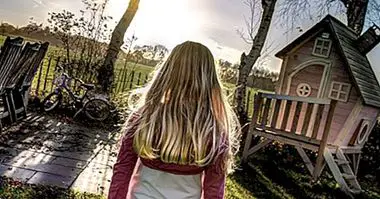Sexist violence in young couples: data and analysis
When you talk about macho violence , we get used to the idea that this type of violence exists, but that it only affects one sector of the population.
What exactly is macho violence?
The myths in this regard make us imagine that this type of violence occurs sporadically, events isolated in time, and in many cases motivated because the woman shows a provocative behavior that the man must control, or in other cases, the myth still It victimizes the woman more by asserting that "the women who endure to be beaten for so long is because they want to."
But, above all, one of the most established myths is that of think that sexist violence exists only in socially disadvantaged sectors and in families that have scarce economic resources.
It may interest you: "The cycle of violence in relationships"
The macho violence in adolescents
What would happen if we discovered that this is not the reality when we talk about sexist violence?
The current studies make us see that the sector of population most affected by gender violence is the adolescent . According to the Spanish macro survey of violence against women in 2015, 21% of women under 25 who have had a partner have been victims of gender violence. Likewise, a study conducted by González and Santana from 2001, reports that 7.5 of boys and 7.1 of girls recognize that they have hit or pushed their partner on one or more occasions (Samaniego and Freixas , 2010). These figures are alarming and make us ask ourselves why this violence is due and what factors can be considered risky at the time of suffering it.
The truth is that In our society, traditional ideals with respect to gender persist . The boys are endowed with a certain superiority, and it is assumed that they are born leaders, strong and without weaknesses; instead, the girls must be desirably docile, submissive and easily manipulated. These gender stereotypes are the ones that are at the base of this type of violence, according to the studies, although we assume that they already belong to the past.
Risk factor's
The risk factors associated with the aggressor in the phenomenon of "dating violence", the name that acquires this phenomenon, refer to the modeling processes adopted in childhood, as is the case of minors exposed to violence within the family, that they will have more possibilities of reproducing these behaviors in their relationships, or those minors who are immersed in a context in which violence is the main tool for resolving interpersonal conflicts.
Prince and Arias point, too, to two contrasting personality profiles, on the one hand, the adolescent with high self-esteem and a sense of control over his life, who uses violence to feel that he increases his control and, on the other hand, that adolescent with low self-esteem and under control that is violent as a way to manifest their frustration (González and Santana, 2010).
Risk factors for victims
On the other hand, the risk factors considered by the authors in relation to suffering said violence are the feelings of hopelessness and low self-esteem , an early start in sexual relationships, maintaining risky sexual relationships, the need for control and the idea of romantic love.
The ballast that generates a certain conception of love
The idea of romantic love, "love that can do anything", is instilled almost from birth to girls, with the idea that they need to have a partner to feel truly fulfilled. A study by Barrón and Martínez-Iñigo in 1999 already pointed to the differences in socialization between boys and girlss. They are taught to tolerate the adversities that affect their relationships, to minimize the problems , to support them and to believe that they are capable of changing their partners, something that does not happen in the case of the boys, who are taught to be independent.
The main problem that exists in violence in adolescent couples lies in the fact that the aggressions take place at very early ages. In many cases, this violence is triggered already from the first couple relationship , which means that the victim does not have the experience and information to adequately assess the situation they are living and, therefore, can not realize what is happening and what the consequences will be (González and Santana, 2010).
Also, as with macho violence, Abuse can range from verbal and emotional abuse to sexual assault and even murder , so that we are faced with a phenomenon that significantly affects the physical and mental health of any person can be a victim, regardless of age, sexual orientation or socioeconomic status.
Know more: "The 30 signs of psychological abuse in a relationship"Bibliographic references:
- Baquero, J. M. (2015). Machist adolescents: the crude heritage of patriarchy. Eldiario.es. //www.eldiario.es/andalucia/Adolescentes-machistas-cruda-herencia-patriarcado_0_449355873.html
- Carballar, O. (2016). The macho violence in adolescents: "if I said I did not feel like it, I would hit". Lamarea.com//www.lamarea.com/2016/02/12/violencia-machista-adolescentes/
- González Méndez, R., Santana Hernández, J. D. (2001). Violence in young couples. Psychotema, vol. 13, n. 1, p. 127-131.
- Samaniego García, E., Freixas Farré, A. (2010). Study on the identification and experience of violence in adolescent couples. Notes of psychology Vol. 28, n. 3, p. 349-366.



















